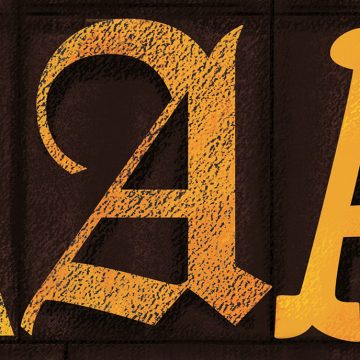No matter what type of law you practise, you probably spend a huge chunk of your time at the office writing. Think about it. We are constantly drafting legal briefs, emails, facta and memos. We compose pleadings, court documents, mediation materials and opinion letters. We dedicate so much effort, thought and analytical brainpower to the substance of these documents. But have you ever taken a moment to consider the look of them?
Yes, I’m talking about typography and design. You might not be a publisher, but you should still care about these topics. Every time you put pen to paper — so to speak — you are trying to engage and persuade the reader. And to accomplish that feat, you will need to hold her attention.
I’m not about to provide you with a list of pretty fonts that will elevate your work product. Typography is a broad term that includes text formatting, point size, page layout and, to be sure, fonts.
My first rule: keep it simple. Imagine reading a 35-page brief that asked you to EVALUATE AND COME TO CONCLUSIONS about a number of different legal issues. Could you imagine how hard that would be if, instead of focusing on the message of the brief, you were being distracted by the LOOK of the WORDS?
Hopefully, that unsightly paragraph above has made my point. If you practise at a large firm, you won’t have a whole lot of creative latitude. Your internal marketing department will probably have a rigid style guide that dictates the font, point size and layout that you can use in your legal writing.
But if you work at a small firm or on an in-house legal team, you can flex your typographic muscles. Let’s talk about fonts. The Ontario Rules of Civil Procedure do not outline a specified font requirement. And so, despite decades of tradition, Times New Roman should not be your go-to font choice. Originally designed for daily newspapers, it’s narrow, squishy and not particularly beautiful to look at on the page. Sure, it’s a safe choice — and certainly not as bad as, say, Arial, or, worse, Comic Sans — but it’s just, well, a bit blah. You don’t want to bore your reader.
What else should you do to boost the typographic appearance of your legal documents? For an in-depth guide, I suggest Matthew Butterick’s Typography for Lawyers. (Yes, it’s a real book and it’s available at The Great Library.) Butterick is a graphic designer-cum-lawyer, which makes him, in my opinion, quite qualified to tackle this topic. I recently read this highly (and surprisingly) enjoyable book. Here are six highlights you can put into practice now.
1. Never underline. It makes text harder to read. If you must emphasize a word or phrase, use bold or italic
2. But never italicize and bold the same word. Also, deploy them sparingly. Overuse diminishes the impact of this technique.
3. Always select a font size between 10 and 12 points.
4. Do not use goofy fonts. Ever. It’s immature and unprofessional.
5. Insert one space between sentences. Never two.
6. Centred text is inappropriate. (After all, you don’t want your legal brief to look like a poem.) Either align your text to the left or justify it. Personally, I prefer justified, but make sure you switch hyphenation on so that you don’t get those large white gaps in your sentences.
As a bonus, here are my three favourite non–Times New Roman fonts: Garamond, Book Antiqua and Californian FB.
This advice isn’t particularly advanced. But neither is great typography. The subtlest changes will make your work stand out.
![]() Emma Gregg is an in-house counsel at Travelers Canada. She writes about both interior design and culture for Precedent and PrecedentJD. Follow her on Instagram at @emmaintoronto.
Emma Gregg is an in-house counsel at Travelers Canada. She writes about both interior design and culture for Precedent and PrecedentJD. Follow her on Instagram at @emmaintoronto.
This story is from our Spring 2019 Issue.
Illustration by Sara Wong


